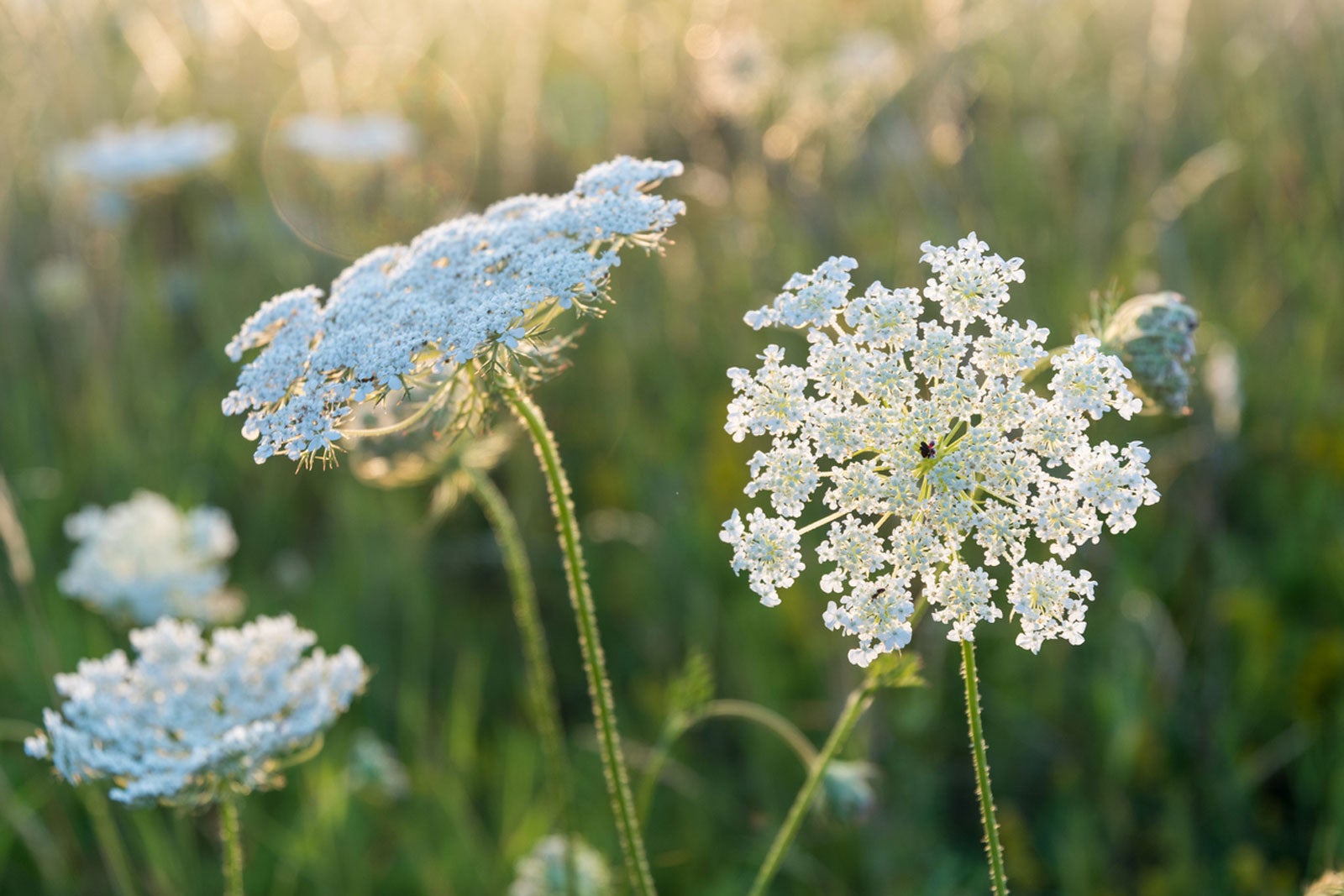
As the original form of our present-day carrot, the wild carrot is also an important food source for insects. The white flowers attract bees, butterflies and beetles. How to plant the wild carrot and how you can use it, you can read here.
The wild carrot is the original form of our modern carrot. It belongs to the umbelliferae family and is widespread in many parts of Europe, North Africa and Asia. It usually grows along roadsides or embankments. You can eat its roots just like those of cultivated carrots, but wild carrots are much smaller and less tender. In addition, the wild carrot has a long tradition as a medicinal plant.
Read here how to cultivate wild carrot in your garden and how to use it.
Contents
Wild carrot in your garden
The wild carrot is a classic example of an old vegetable variety. If you grow it in your garden, you will contribute twice to the preservation of the diversity of varieties: In addition to the vegetable variety you preserve, the original form of the carrot with its white umbels provides valuable food for insects. According to NABU, the wild carrot is very popular with many insects. These include wild bees, leaf wasps, bugs, beetles and flies. Some caterpillars, such as those of the swallowtail, particularly appreciate the wild carrot as a food source. It is therefore also a good addition to an insect-friendly garden.
The following points should be considered to ensure that the wild carrot feels at home in your garden.
Location: Wild carrot prefers a sunny location, but will also thrive in partial shade.
Soil:
- The original form of carrot is quite adaptable when it comes to soil conditions.
- In nature, it grows in dry, calcareous and permeable soils.
Planting and caring for wild carrot
The wild carrot is a mostly biennial, herbaceous plant. In the first year it forms its leaves close to the ground, which are arranged in a circle. It is not until the second year that the wild carrot flowers. It grows between ten and 30 centimeters high. Although the roots contain hardly any carotene and are therefore white instead of orange, their scent is strongly reminiscent of carrots.
If you want to plant the wild carrot in your garden, we recommend that you use organic seeds. This way you avoid genetic engineering and support the diversity of varieties.
How to plant the wild carrot:
- The wild carrot belongs to the so-called cold germinators. Therefore, it needs a longer cold period at the beginning to be able to germinate.
- From April, you can sow the wild carrot directly in the bed. If you want to cultivate it as a vegetable, a planting distance of about 40 centimeters is recommended. For a wild flower meadow you can simply scatter the seeds.
How to care for the wild carrot:
- Until the seeds begin to germinate, be sure to keep them well moist.
- In addition, you only need to water them during long periods of drought.
- Since the wild carrot is used to nutrient-poor soil, you do not need to fertilize it.
How to use the wild carrot

From a culinary point of view, the wild carrot is particularly valuable because you can use all the parts.
Root:
If you want to process the roots of the wild carrot, you should harvest them at the end of the first year. Once the plant has started to produce flowers, the roots become woody and very sharp. In the first year, however, they store sugar and are particularly sweet.
You can eat them raw or cook them like regular carrots.
Leaves and flowers:
You can prepare wild herb salads with the young leaves, process them similarly to spinach or use them as soup vegetables.
Harvest the leaves in spring, between April and June, before the stems harden.
The young flowers are also edible. You can use them to decorate dishes. When cooked, they add a pleasant spice to your dishes.
Fruits:
The fruits or seeds of the plant are used rather rarely. Basically, you can use them as a spice similar to anise or fennel, which come from the same family.
The seeds are ready for harvest from September to October.
Because of its many effects, the wild carrot is also considered a medicinal plant. Traditionally, it is used, among other things, for digestive problems, or to regulate menstruation. Here, too, all parts of the plant are used.
According to a 2017 study, wild carrot also has other healing properties:
- antioxidant
- anti-inflammatory
- beneficial for wound healing
- blood sugar lowering
- lowers cholesterol levels.
Tip: If you collect the wild carrot in nature, you can recognize it by its characteristic dark spot in the middle of the light flowers. This spot has also earned it the name “carrot”. It is supposed to attract insects and thus help with pollination. But beware: there are some doppelgangers of the wild plant, such as the poisonous dog parsley, with which you should better not confuse the plant.









